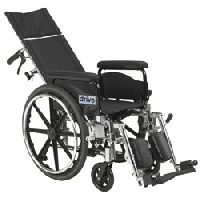
There are many ways to keep seniors mobile and living a full life
How would you like it if you couldn?t walk around, or could no longer drive a car or get up and down a staircase? Not much. Many seniors are prohibited from movement due to physical impairments. There are ways to keep seniors mobile.
There are many assistive living products that can keep a person on the go. These tools are beneficial to the older person who may have become isolated in his home and is at high risk of becoming a victim of depression. Furthermore, these products lessen the chance that a person will fall due to his poor balance.
Walker
Could the individual benefit from a walker? If so, when buying one make sure it has non-skid rubber tips or wheels and rubber tips for the hands. This prevents sliding. A lightweight walker is easy to lift when a person is going down or up steps. Make sure the walker is hardy enough for the person before purchasing.
Get a walker that is adjustable so it can be made taller or shorter to suit the user?s height. Some walkers possess hand breaks. You can purchase walkers complete with an attached basket, which comes in handy.
~
Using a Walker
You use a walker for standing, walking, turning and sitting down. When you are about to stand up, engage the brakes on the walker. As you prepare to get up from a chair, move the walker forward, sitting as closely as possible to the edge of the chair, keeping your feet directly under you.
Put both hands on the seat or arms of the chair you are sitting in or put one hand on the walker and the other hand on the chair seat or arm. Firm armrests help a person who needs assistance getting up from a chair or back down into one.
If you put too much weight on the walker as you attempt to stand up, it will tip. Lean forward, making sure you?ve put weight on your feet, using your legs to stand, as well as your hands. Your hands help you maintain balance as you stand. Get yourself situated into a standing position, testing your balance. Disengage the brakes and then proceed to walk.
When getting read to sit down (while using a walker) stand directly in front of the chair, with your back facing the chair. The backs of your legs should be nearly touching the chair. Do not attempt to sit until you are balanced.
Push the walker a bit away from you which enables you to bend forward slightly as you prepare to sit down. Engage the brakes on the walker.
Reach behind you and grasp the chair?s arms with both of your hands (if possible) or do so with one hand with the remaining hand on the walker. Do not place too much weight on the walker because it can tip.
Gently lower yourself into the chair, utilizing your legs as much as possible. To avoid sitting down too hard, lean forward a bit more, bending your knees, lowering yourself into a sitting position.
When using a walker, do not tilt it or pull on it when getting up from a seated position.
Cane
